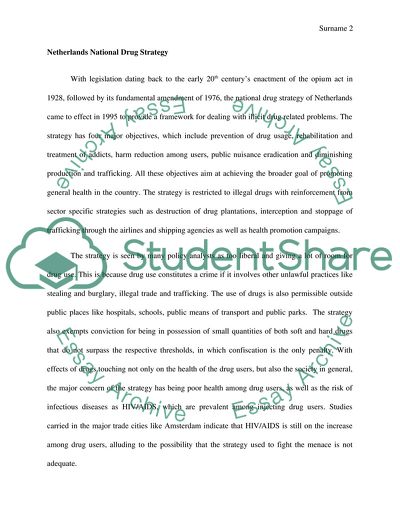Cite this document
(Netherlands National Drug Strategy Essay Example | Topics and Well Written Essays - 2500 words, n.d.)
Netherlands National Drug Strategy Essay Example | Topics and Well Written Essays - 2500 words. https://studentshare.org/social-science/1763194-pick-one-of-the-three-countries-that-we-studied-in-depth-us-sweden-or-holland-that-has-or-had-a-national-drug-strategy-with-which-you-disagree
Netherlands National Drug Strategy Essay Example | Topics and Well Written Essays - 2500 words. https://studentshare.org/social-science/1763194-pick-one-of-the-three-countries-that-we-studied-in-depth-us-sweden-or-holland-that-has-or-had-a-national-drug-strategy-with-which-you-disagree
(Netherlands National Drug Strategy Essay Example | Topics and Well Written Essays - 2500 Words)
Netherlands National Drug Strategy Essay Example | Topics and Well Written Essays - 2500 Words. https://studentshare.org/social-science/1763194-pick-one-of-the-three-countries-that-we-studied-in-depth-us-sweden-or-holland-that-has-or-had-a-national-drug-strategy-with-which-you-disagree.
Netherlands National Drug Strategy Essay Example | Topics and Well Written Essays - 2500 Words. https://studentshare.org/social-science/1763194-pick-one-of-the-three-countries-that-we-studied-in-depth-us-sweden-or-holland-that-has-or-had-a-national-drug-strategy-with-which-you-disagree.
“Netherlands National Drug Strategy Essay Example | Topics and Well Written Essays - 2500 Words”. https://studentshare.org/social-science/1763194-pick-one-of-the-three-countries-that-we-studied-in-depth-us-sweden-or-holland-that-has-or-had-a-national-drug-strategy-with-which-you-disagree.


